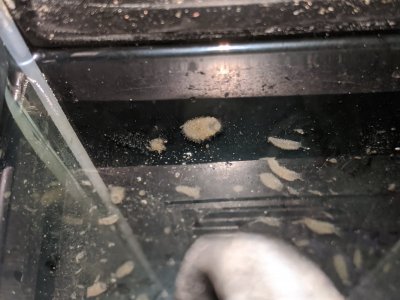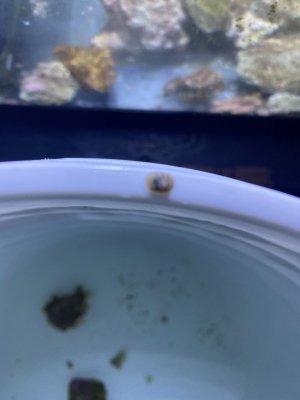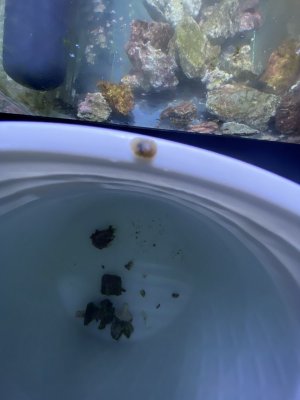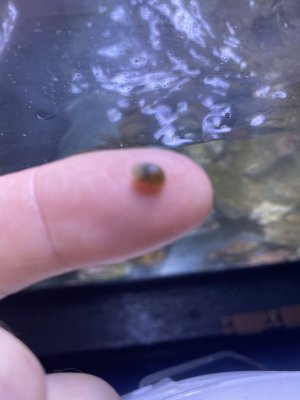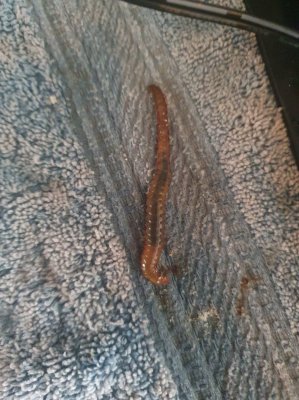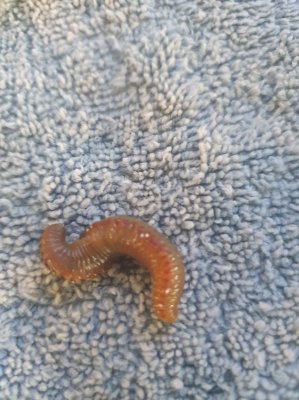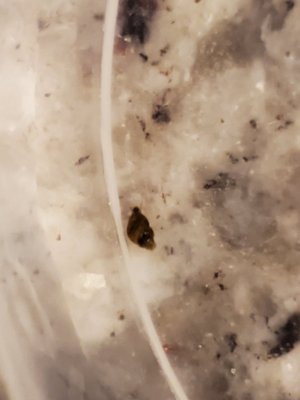Sponge.Hi! First time posting on this thread, but I have read a lot of it!
Can you guys ID this.... thing? Tell me if it’s good or not. THANKS!! They are soft at the entrances and hard in their weird tunnel things. Taken over the whole live rock lol



Navigation
Install the app
How to install the app on iOS
Follow along with the video below to see how to install our site as a web app on your home screen.
Note: This feature may not be available in some browsers.
More options
You are using an out of date browser. It may not display this or other websites correctly.
You should upgrade or use an alternative browser.
You should upgrade or use an alternative browser.
What is that!! A R2R guide to common new tank hitchhikers.
- Thread starter Crabs McJones
- Start date
- Tagged users None
Welcome to R2R!!!
Pineapple sponge.
- Joined
- May 21, 2020
- Messages
- 25
- Reaction score
- 13
I'm new and only 4 months in with my tank and I really appreciate this post. It will be nice to know where to go when one of these hitchhikers appears. Haven't had an issue yet with any hitchhikers but I'm sure there will come a day.....
Any idea what this is?One of the greatest things about starting a reef tank is getting your live rock in and admiring all the diversity within it. The rock comes to life different creatures. This is a guide that I, along with a very well known critter identifier @KJ , have put together for the new reefer on what these hitchhikers are and whether they're a keeper or to pull them out.
Bristleworm -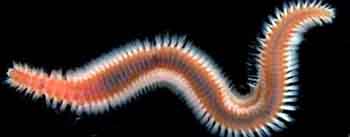
Very common good hitchhiker. The jury is out on whether they're beneficial or not. Most consider them a vital part of your clean up crew. The hide within your live rock, coming out to pick up scraps of food and other detritus. Their numbers can become overwhelming based off how much food is available in the tank. If you overfeed, and they have access to an abundance of food, their numbers will increase dramatically. Be careful not to touch as the bristles on the sides of their bodies can be very irritating and cause an allergic reaction in some.
Fireworm -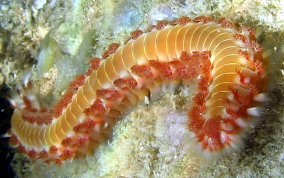
Bad hitchhiker. Similar to the bristle worm, however if stung by the bristles on this little guy, its 10 times worse. DO NOT TOUCH UNDER ANY CIRCUMSTANCES! If found it is best to remove with a trap.
Pineapple Sponges -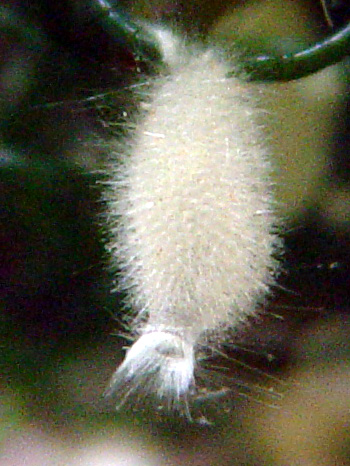
Very common good hitchhiker. These little guys are a type of sponge. They are most commonly found in overflows and in high flow areas of the sump. However, they can sometimes bee seen in shaded areas of your rockwork.
Asterina Starfish -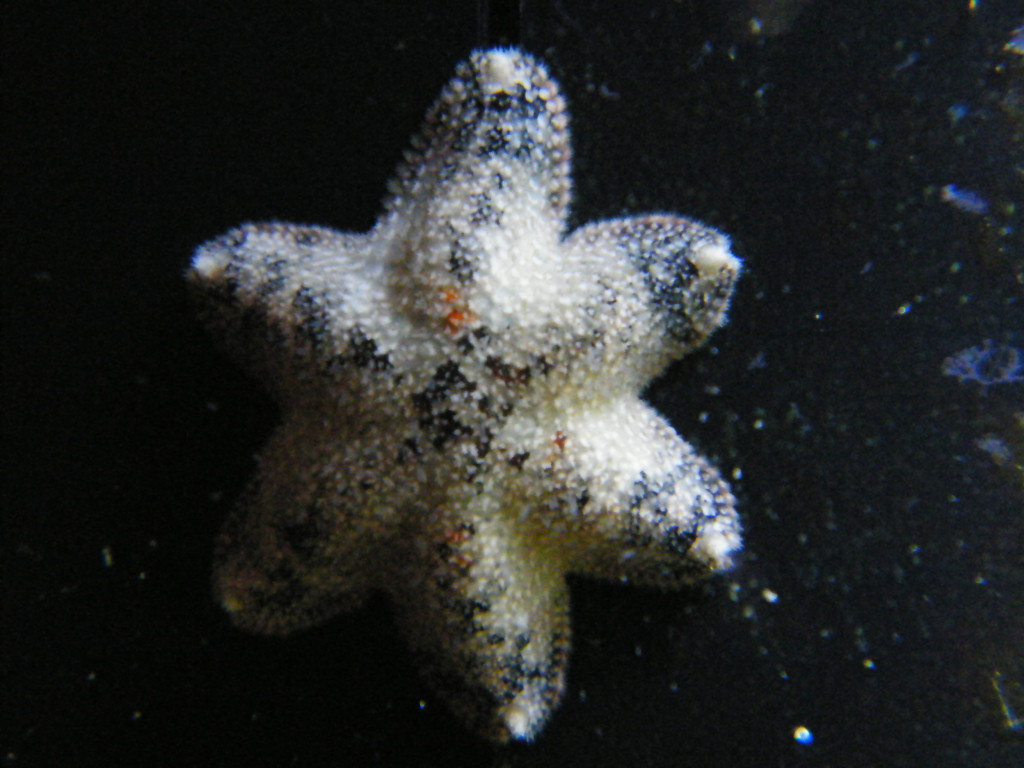
Another common neutral hitchhiker. Jury is out on these guys as to good or bad. Some people love them, some hate them. They've been rumored to munch on coralline algae. They are also known to multiply very rapidly. Manual removal when seen is best to control their numbers.
Aiptasia -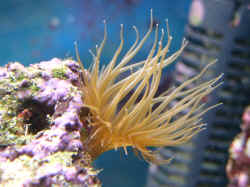
Bad hitchhiker. This is a type of anemone that multiplies very quickly, and stings and kills anything that gets near it. Depended on how many you have, they're best removed by manually scraping them off the rock, and then using epoxy/superglue/kalk paste over where they were to prevent them coming back. A few predators that you can get for them include the peppermint shrimp, berghia nudibranch, and with a large enough tank, copperband butterflyfish.
Majano -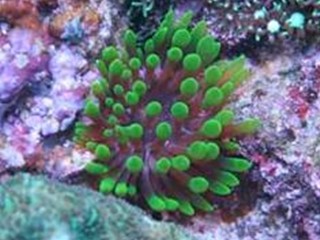
Bad Hitchhiker. This is another pest anemone that multiplies quickly and stings anything near it. Best removed by manual scraping off and super glue/epoxy/kalk past over its spot. Peppermint shrimp will reportedly consume them as well.
Vermedit Snail -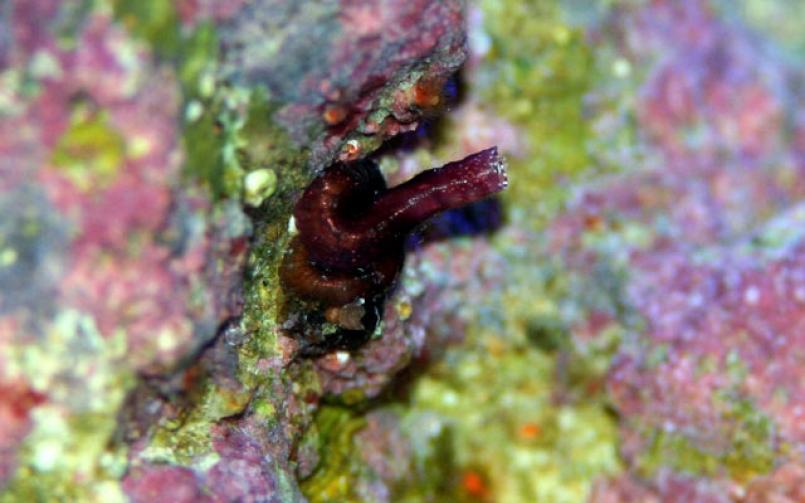
Very common neutral hitchhiker. They are generally harmless, but can multiply quickly based off nutrients in the tank, and can irritate corals. Manual removal or starving them out by putting a dab of superglue on the end of the tube is best to keep their numbers in check, as well as nutrient control.
Spirorbid Worm -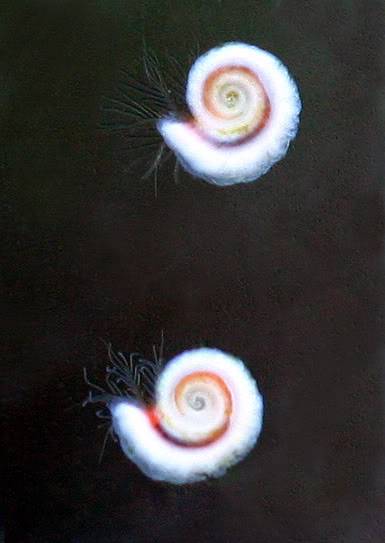
Very common neutral hitchhiker. These guys are most commonly found in overflows, and high flow areas of your sump. Can multiply very quickly and have been rumored to disrupt equipment such as pumps. Nutrient control keeps their numbers in check.
Ball Anemone -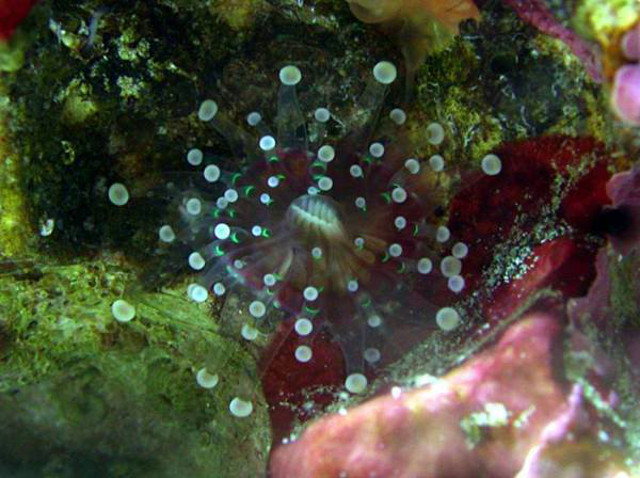
Common neutral hitchhiker. They are found in shaded areas of live rock, and tend to not bother anything and numbers are kept in check with nutrient control. Are removed by the same means as the aiptasia and majano.
Stomatella Snail -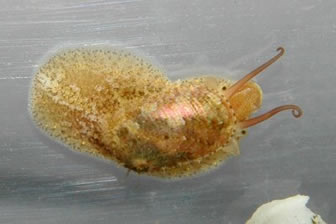
Very good hitchhiker. These guys are a great clean up crew member. They can be very elusive and most commonly found after lights out and are very fast moving. They feed off different algae in the tank.
Copepod/Isopod/Amphipod -
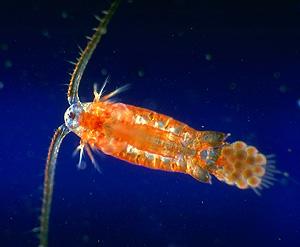

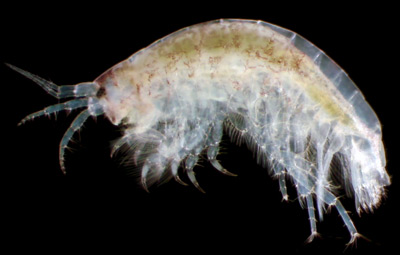
Very good hitchhikers. Often referred to as simply "pods" These little guys live within your rock work and make great food for your fish and corals. They can be the primary diet of certain mandarins.
Spaghetti Worm -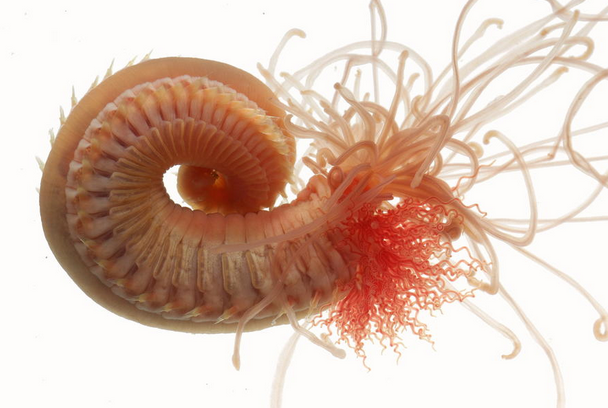
Good hitchhiker. Commonly found in the sand bed or live rock. They extend out multiple tentacles to catch floating detritus. Good member of your clean up crew.
Hydroids -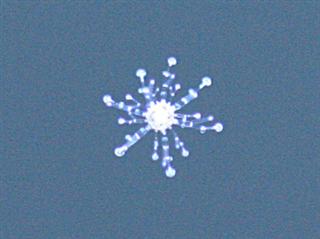

Bad hitchhikers. Good news is that they don't tend to live very long and die off on their own as the tank progresses.
Sponges -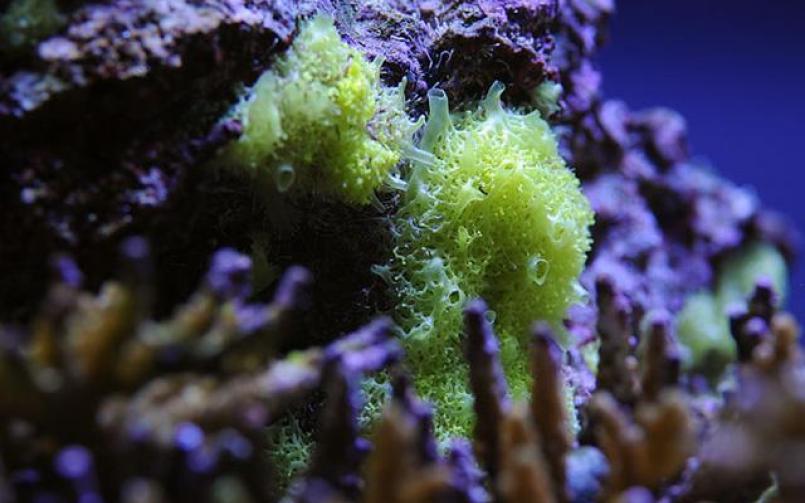
Good hitchhiker. Very common filter feeders. Found in shaded areas of live rock
Serpent And Brittle Starfish -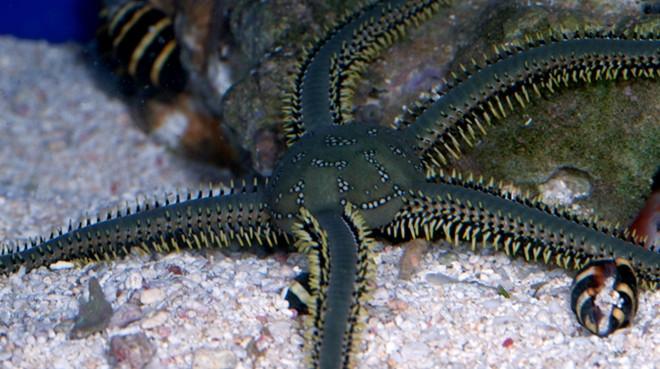
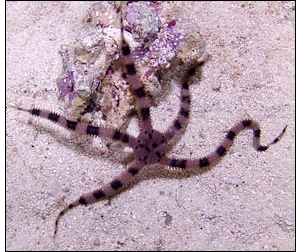
Good hitchhikers. Are most commonly found by the arms extending out from cracks and holes in rock work. Feed off leftover food and detritus in the tank.
Bobbit Worm -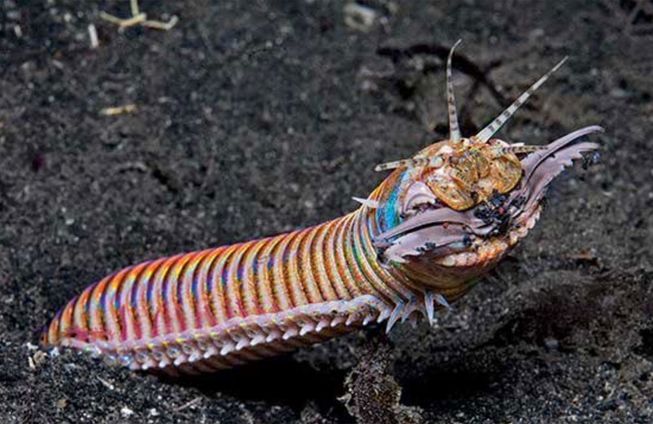
Very bad hitchhiker. These guys can grow to be very large and can kill fish. Most common means of removal is to remove the entire rock where the worm is housed. Be careful of the pincer teeth at the head of the worm.
Tunicate -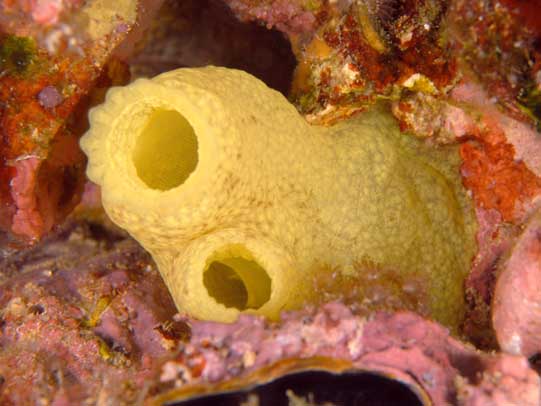
Good hitchhiker. Harmless filter feeder. At first glance looks like a sponge, except it pulses as it takes in and expels water, and reacts to touching it.
Limpet -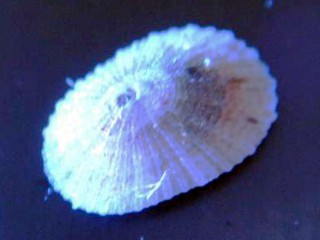
Good hitchhiker. Consumes algae. Don't seem to bother anything.
Chiton -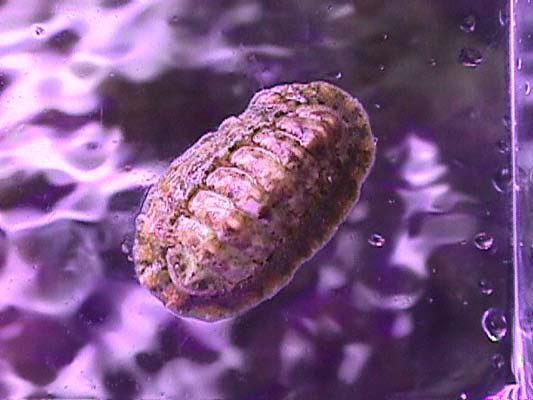
Good hitchhiker. Consumes algae. Does not appear to bother anything.
Peanut Worm -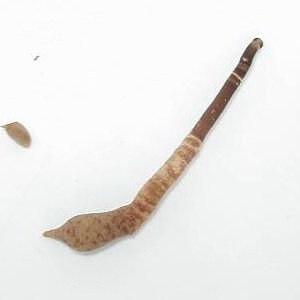
Good hitchhiker. Lives in live rock and feeds off of extra food and detritus.
Gorilla Crab -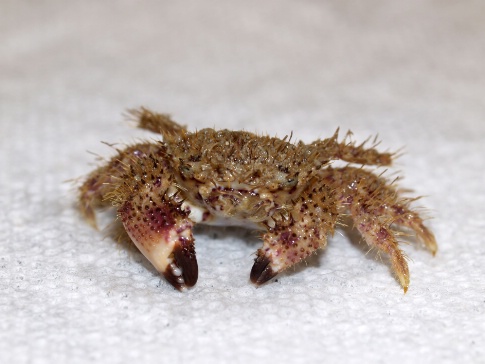
Bad hitchhiker. Can be found in live rock cracks, caves and holes. They are predatory and will hunt your shrimp and inverts. They can also grow rather large.
I did not cover Nudibranch, Snails, or Flatworms in this thread as there are far to many variations to cover. If you have an unknown, please create a thread or post it in this thread and we'll try our best to ID it for you. If you have any additions to the list please PM me and I'll review it and add to the list.
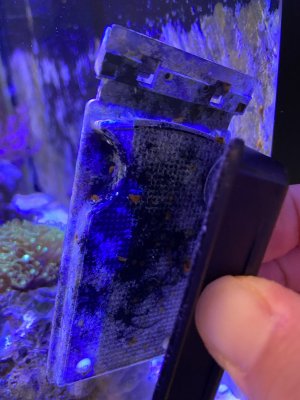
Attachments
Crabs McJones
I'm so shi-nay
View Badges
Excellence Award
Reef Tank 365
Article Contributor
Moderator Emeritus
Hospitality Award
Reef Tank 365 Boss
Wisco Reefers
My Tank Thread
I'm fairly certain those are Caulerpa Slugs
Those seem to be green on my google searches. Mine are red and crunch when squished with a knife (gross I know but really want to get an ID). Did my videos work? They are way better quality than the picture.I'm fairly certain those are Caulerpa Slugs
- Joined
- Mar 5, 2020
- Messages
- 10
- Reaction score
- 15
This was great info. Thank you very much.One of the greatest things about starting a reef tank is getting your live rock in and admiring all the diversity within it. The rock comes to life different creatures. This is a guide that I, along with a very well known critter identifier @KJ , have put together for the new reefer on what these hitchhikers are and whether they're a keeper or to pull them out.
Bristleworm -
Very common good hitchhiker. The jury is out on whether they're beneficial or not. Most consider them a vital part of your clean up crew. The hide within your live rock, coming out to pick up scraps of food and other detritus. Their numbers can become overwhelming based off how much food is available in the tank. If you overfeed, and they have access to an abundance of food, their numbers will increase dramatically. Be careful not to touch as the bristles on the sides of their bodies can be very irritating and cause an allergic reaction in some.
Fireworm -
Bad hitchhiker. Similar to the bristle worm, however if stung by the bristles on this little guy, its 10 times worse. DO NOT TOUCH UNDER ANY CIRCUMSTANCES! If found it is best to remove with a trap.
Pineapple Sponges -
Very common good hitchhiker. These little guys are a type of sponge. They are most commonly found in overflows and in high flow areas of the sump. However, they can sometimes bee seen in shaded areas of your rockwork.
Asterina Starfish -
Another common neutral hitchhiker. Jury is out on these guys as to good or bad. Some people love them, some hate them. They've been rumored to munch on coralline algae. They are also known to multiply very rapidly. Manual removal when seen is best to control their numbers.
Aiptasia -
Bad hitchhiker. This is a type of anemone that multiplies very quickly, and stings and kills anything that gets near it. Depended on how many you have, they're best removed by manually scraping them off the rock, and then using epoxy/superglue/kalk paste over where they were to prevent them coming back. A few predators that you can get for them include the peppermint shrimp, berghia nudibranch, and with a large enough tank, copperband butterflyfish.
Majano -
Bad Hitchhiker. This is another pest anemone that multiplies quickly and stings anything near it. Best removed by manual scraping off and super glue/epoxy/kalk past over its spot. Peppermint shrimp will reportedly consume them as well.
Vermedit Snail -
Very common neutral hitchhiker. They are generally harmless, but can multiply quickly based off nutrients in the tank, and can irritate corals. Manual removal or starving them out by putting a dab of superglue on the end of the tube is best to keep their numbers in check, as well as nutrient control.
Spirorbid Worm -
Very common neutral hitchhiker. These guys are most commonly found in overflows, and high flow areas of your sump. Can multiply very quickly and have been rumored to disrupt equipment such as pumps. Nutrient control keeps their numbers in check.
Ball Anemone -
Common neutral hitchhiker. They are found in shaded areas of live rock, and tend to not bother anything and numbers are kept in check with nutrient control. Are removed by the same means as the aiptasia and majano.
Stomatella Snail -
Very good hitchhiker. These guys are a great clean up crew member. They can be very elusive and most commonly found after lights out and are very fast moving. They feed off different algae in the tank.
Copepod/Isopod/Amphipod -



Very good hitchhikers. Often referred to as simply "pods" These little guys live within your rock work and make great food for your fish and corals. They can be the primary diet of certain mandarins.
Spaghetti Worm -
Good hitchhiker. Commonly found in the sand bed or live rock. They extend out multiple tentacles to catch floating detritus. Good member of your clean up crew.
Hydroids -

Bad hitchhikers. Good news is that they don't tend to live very long and die off on their own as the tank progresses.
Sponges -
Good hitchhiker. Very common filter feeders. Found in shaded areas of live rock
Serpent And Brittle Starfish -

Good hitchhikers. Are most commonly found by the arms extending out from cracks and holes in rock work. Feed off leftover food and detritus in the tank.
Bobbit Worm -
Very bad hitchhiker. These guys can grow to be very large and can kill fish. Most common means of removal is to remove the entire rock where the worm is housed. Be careful of the pincer teeth at the head of the worm.
Tunicate -
Good hitchhiker. Harmless filter feeder. At first glance looks like a sponge, except it pulses as it takes in and expels water, and reacts to touching it.
Limpet -
Good hitchhiker. Consumes algae. Don't seem to bother anything.
Chiton -
Good hitchhiker. Consumes algae. Does not appear to bother anything.
Peanut Worm -
Good hitchhiker. Lives in live rock and feeds off of extra food and detritus.
Gorilla Crab -
Bad hitchhiker. Can be found in live rock cracks, caves and holes. They are predatory and will hunt your shrimp and inverts. They can also grow rather large.
I did not cover Nudibranch, Snails, or Flatworms in this thread as there are far to many variations to cover. If you have an unknown, please create a thread or post it in this thread and we'll try our best to ID it for you. If you have any additions to the list please PM me and I'll review it and add to the list.
Vayssierea sp.Those seem to be green on my google searches. Mine are red and crunch when squished with a knife (gross I know but really want to get an ID). Did my videos work? They are way better quality than the picture.
- Joined
- Mar 27, 2018
- Messages
- 1,387
- Reaction score
- 762
Have a couple heads of Aiptasia in our tank lately. So far been able to hit them with Aiptasia-X as it's only been like 3 heads. Working on getting another filefish or a couple of the dwarf filefish to help control it going forward. But it got me thinking how does this stuff spread and how insanely hardy it must be.
We had it in our old 75G tank, nothing outrageous except in the overflow but still, enough to see it. Our new setup is a 180G that I got from a friend. To my knowledge, he never had any Aiptasia problems in it. It was mainly his FOWLR tank. Even if there was some in it before, the tank, sump and all the plumbing was washed with vinegar and then sat bone dry in our garage for over 3 months before we started setting it up. We used brand new rock and sand in the new tank while the old tank was still running. The old tank was in the living room and the new one is in the dining room, at least 30 feet away. Everything in the new tank was either brand new, or sat dry for months before being used. Never saw any Aiptasia until a couple weeks ago (tank has been running with fish since Feb I think).
So now I'm trying to just think of how it got in there. Did it hitch a ride on a fish? Was it in the plumbing and somehow able to survive despite being dry for over 3 months? Did it come in another way?
Not a huge problem as long as I keep an eye on it, but definitely makes me wonder how it got there.
We had it in our old 75G tank, nothing outrageous except in the overflow but still, enough to see it. Our new setup is a 180G that I got from a friend. To my knowledge, he never had any Aiptasia problems in it. It was mainly his FOWLR tank. Even if there was some in it before, the tank, sump and all the plumbing was washed with vinegar and then sat bone dry in our garage for over 3 months before we started setting it up. We used brand new rock and sand in the new tank while the old tank was still running. The old tank was in the living room and the new one is in the dining room, at least 30 feet away. Everything in the new tank was either brand new, or sat dry for months before being used. Never saw any Aiptasia until a couple weeks ago (tank has been running with fish since Feb I think).
So now I'm trying to just think of how it got in there. Did it hitch a ride on a fish? Was it in the plumbing and somehow able to survive despite being dry for over 3 months? Did it come in another way?
Not a huge problem as long as I keep an eye on it, but definitely makes me wonder how it got there.
Yes flatworms remove them.Any idea what these are...looking like flat worms;Nailbiting

Crabs McJones
I'm so shi-nay
View Badges
Excellence Award
Reef Tank 365
Article Contributor
Moderator Emeritus
Hospitality Award
Reef Tank 365 Boss
Wisco Reefers
My Tank Thread
Yup, bristleworm
Crabs McJones
I'm so shi-nay
View Badges
Excellence Award
Reef Tank 365
Article Contributor
Moderator Emeritus
Hospitality Award
Reef Tank 365 Boss
Wisco Reefers
My Tank Thread
Does anyone know what these are? Hydroids maybe? They just appeared in my clownfish grow out tank. (See video)
Looks like a type of hydroid jellyfish to me
- Joined
- May 13, 2019
- Messages
- 4
- Reaction score
- 29
That is what I was thinking, thanks.Looks like a type of hydroid jellyfish to me
- Joined
- Jun 28, 2020
- Messages
- 24
- Reaction score
- 22
I am new to the forum and the hobby. I have been keeping fish for 20 years but I had never done salt water or a reef tank. I recently received an elegance coral from live aquaria and it seems to have a hitchhiker on it. It opens and closes randomly. Is it safe to keep there? It looks almost like a clam.
I was hoping for some help with these of pics as well. Those small white dots didnt appear until I added pods to the tank. The are not spiroid worm (i think). They do crunch a bit if I scrape them off the glass. And last is that white piece on the shell. It will close up if a hermit goes near it. Is it safe or should I just pull the shell?
I appreciate any help I can get! Thanks!




I was hoping for some help with these of pics as well. Those small white dots didnt appear until I added pods to the tank. The are not spiroid worm (i think). They do crunch a bit if I scrape them off the glass. And last is that white piece on the shell. It will close up if a hermit goes near it. Is it safe or should I just pull the shell?
I appreciate any help I can get! Thanks!
Crabs McJones
I'm so shi-nay
View Badges
Excellence Award
Reef Tank 365
Article Contributor
Moderator Emeritus
Hospitality Award
Reef Tank 365 Boss
Wisco Reefers
My Tank Thread
Welcome to Reef2Reef! Likely a bivalve. harmless filter feeder. the second picture looks like nerite snail eggs, and the last one on your snail is likely a slipper limpetI am new to the forum and the hobby. I have been keeping fish for 20 years but I had never done salt water or a reef tank. I recently received an elegance coral from live aquaria and it seems to have a hitchhiker on it. It opens and closes randomly. Is it safe to keep there? It looks almost like a clam.
I was hoping for some help with these of pics as well. Those small white dots didnt appear until I added pods to the tank. The are not spiroid worm (i think). They do crunch a bit if I scrape them off the glass. And last is that white piece on the shell. It will close up if a hermit goes near it. Is it safe or should I just pull the shell?
I appreciate any help I can get! Thanks!



Similar threads
- Replies
- 11
- Views
- 461
- Replies
- 4
- Views
- 127
- Replies
- 16
- Views
- 260



